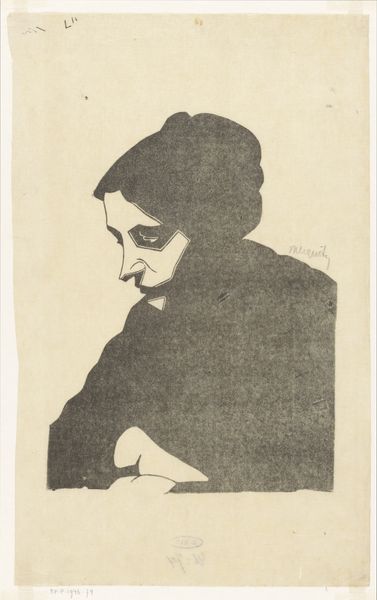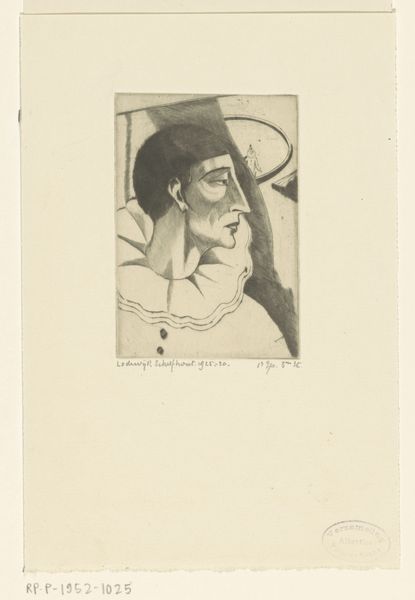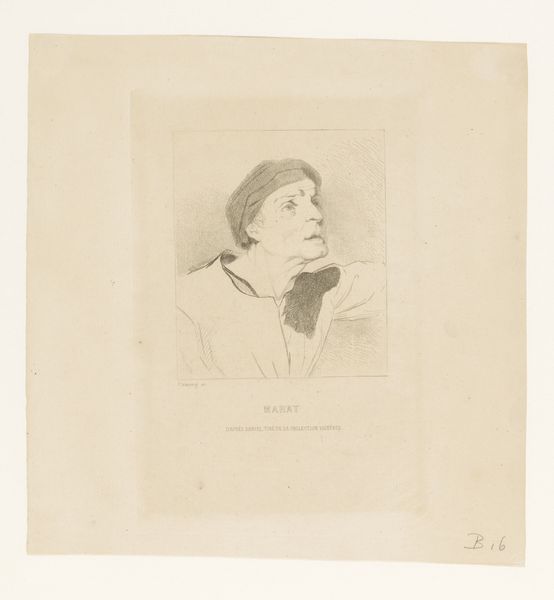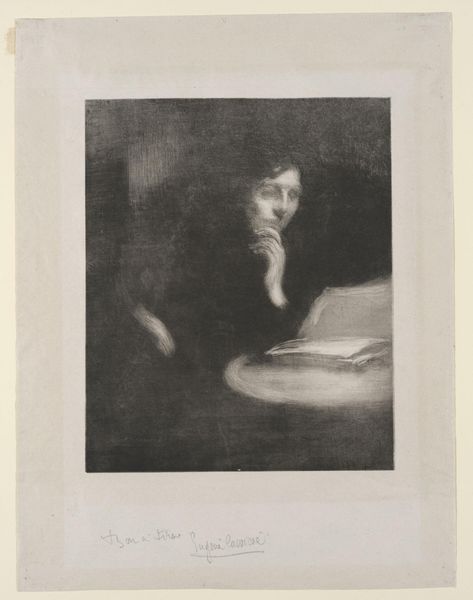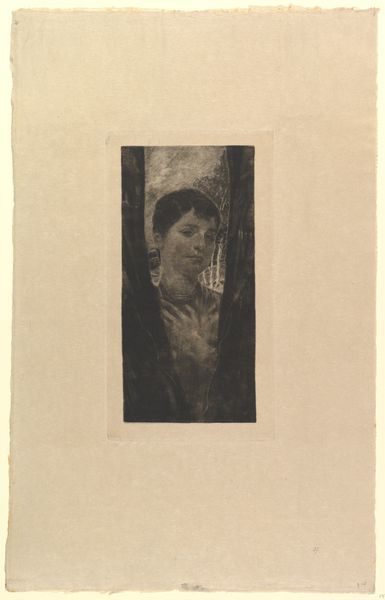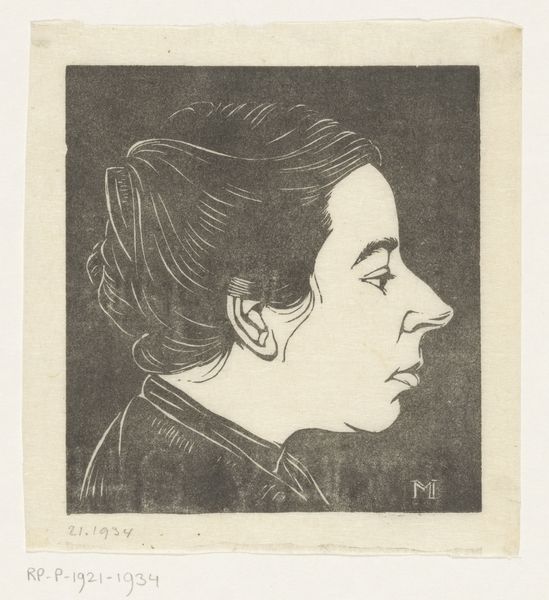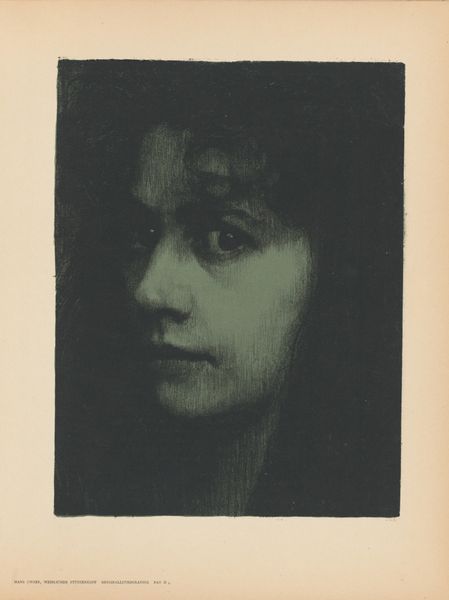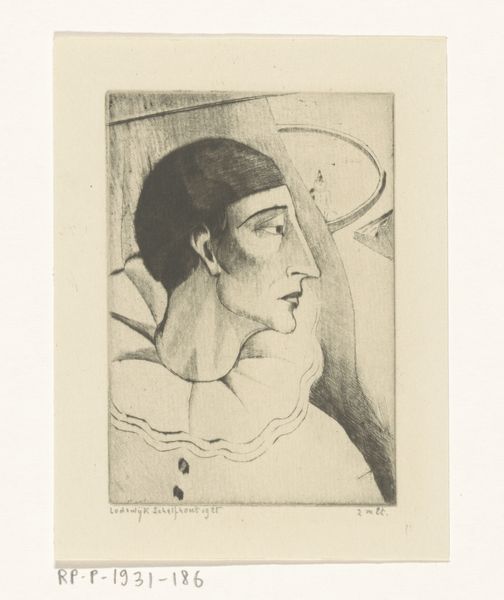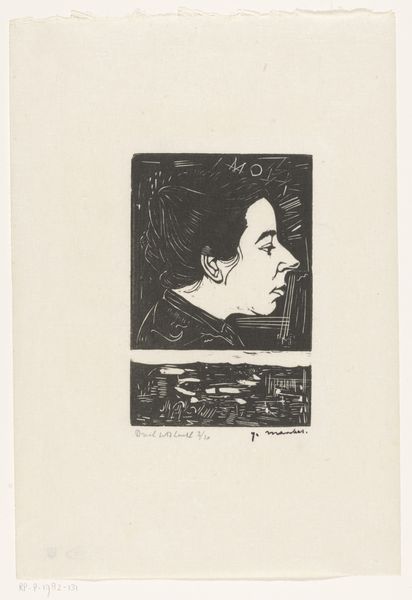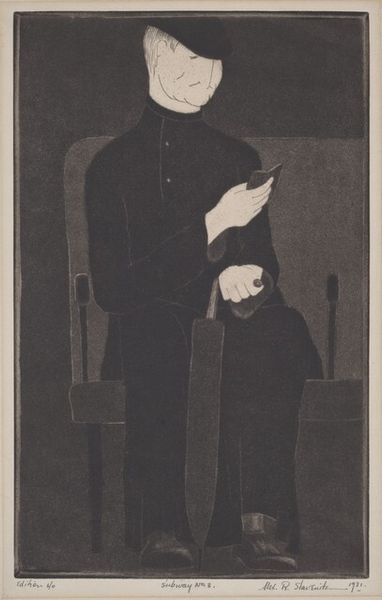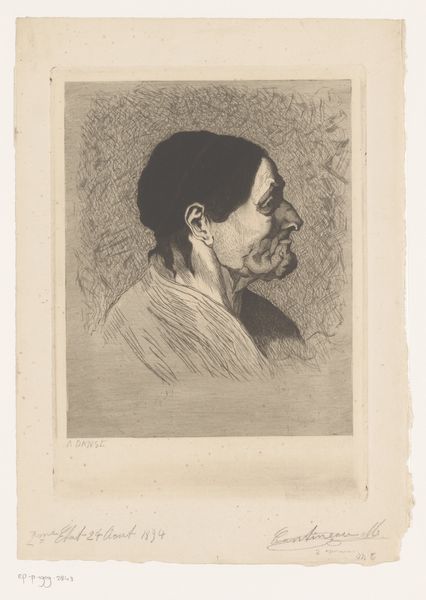
drawing, print, graphite
#
portrait
#
drawing
#
art-nouveau
# print
#
caricature
#
caricature
#
figuration
#
form
#
expressionism
#
graphite
#
portrait drawing
Dimensions: height 205 mm, width 154 mm
Copyright: Rijks Museum: Open Domain
Curator: Here we have Samuel Jessurun de Mesquita's "Portret van een onbekende vrouw," created in 1913. It’s currently held at the Rijksmuseum. What's your first take on this image? Editor: My immediate reaction is one of somber reflection. There is such restraint in the image. The monochrome palette and obscured form evoke mystery. Curator: Let's look at Mesquita's process. This is a drawing, likely a graphite print on paper, making it easily reproducible. What impact might this have on how the image was received and distributed during his time? Was it considered more 'high art' or something else? Editor: The silhouette certainly speaks to the symbolism prevalent at the turn of the century. Consider how silhouettes have long represented an absence, a shadow of the real. The fact that she's an unknown woman amplifies this sense of anonymous identity. She is every woman and no woman. Curator: Yes, but how was it made? What paper? What specific type of graphite was utilized and where was it sourced from? Mesquita clearly engaged in some sort of commercial art practice, how do his printing and engraving commissions connect with the "fine art" displayed at the museum? Editor: The face is fascinatingly geometric almost a caricature which complicates her symbolic representation. Is it reverence or commentary, given those angles? There are also shapes resembling stylized masks which are not really common for classic potraits... Curator: Maybe it reveals something about our culture’s early 20th-century relationship with both art and technology. It wasn’t intended for the elite gallery circuit but could reach a wider, more diverse audience precisely because it was reproducible. Editor: Interesting perspective. Her obscured presentation hints at the psychological weight carried by women of that era, and by its creation by male author. Perhaps this woman's shadowed portrayal makes the gaze ambiguous which amplifies, rather than limits her symbolism. Curator: So it is how the meaning in this work lives in tension, then, between Mesquita’s studio production and her complex depiction? Thank you. Editor: Indeed. It gives us a window to think about female portraiture through that tension. Thanks.
Comments
No comments
Be the first to comment and join the conversation on the ultimate creative platform.

